
⭐ Games that receive this star have a score of 95% or above. This is purely from a game design perspective and is not in any way related to our morality evaluation.
Halo: one of the most innovative and legendary series in all of gaming. From 2001 to the early 2010s, Bungie’s sci-fi first person shooters ruled the industry. Unfortunately, after Bungie did all they wanted to do with Halo and left to make the Destiny games (which I’m also a fan of), Microsoft needed Halo to continue since it was the Xbox’s flagship series, making a new studio called 343 dedicated only to future Halo installments. Three games later, Halo is a dying husk of its former self in 2023. Fans disliked Halo 4 and 5, and while Halo: Infinite was better, it wasn’t enough to bring people back.
With Infinite’s multiplayer updates being stagnated by internal layoffs (and general chaos), and with potential reboots being recently announced due to Infinite’s massive failure, I decided to finally play the older Halos for myself using the Master Chief Collection on the Xbox One. I became obsessed with Halo as a kid (I was into sci-fi, okay) but couldn’t play it yet, so actually playing them after all these years was very nostalgic for me. With all the insurmountable problems of modern Halo and the real possibility that the franchise sinks for good in the coming years, let us take a journey back to the Bungie era, the golden age of the series that I first fell in love with. To be clear, this is not a review of the Master Chief Collection, but the games themselves, although I will be talking about the collection sometimes when it optimizes the games from their original state.
Halo: Combat Evolved (2001)
Story
The game’s story is fairly simple. The ship the Master Chief is on (the player character) crashes on a mysterious ring (called Halo) while pursued by hostile aliens known as the Covenant. While there, you fight Covenant forces as you try to survive and discover what exactly Halo is, leading to some big surprises.
It’s not much, honestly. You are barely given any context about what your ship was fleeing from when it stumbled upon Halo, or what the Covenant is and why they are fighting humanity. The twists later in the story are a little sudden and make a lot of the first half basically irrelevant. Although I’ve heard that for 2001, the fact that the game even tried to have a more complex story was innovative for its time, to the modern gamer it will feel a bit clunky and like its lacking substance.
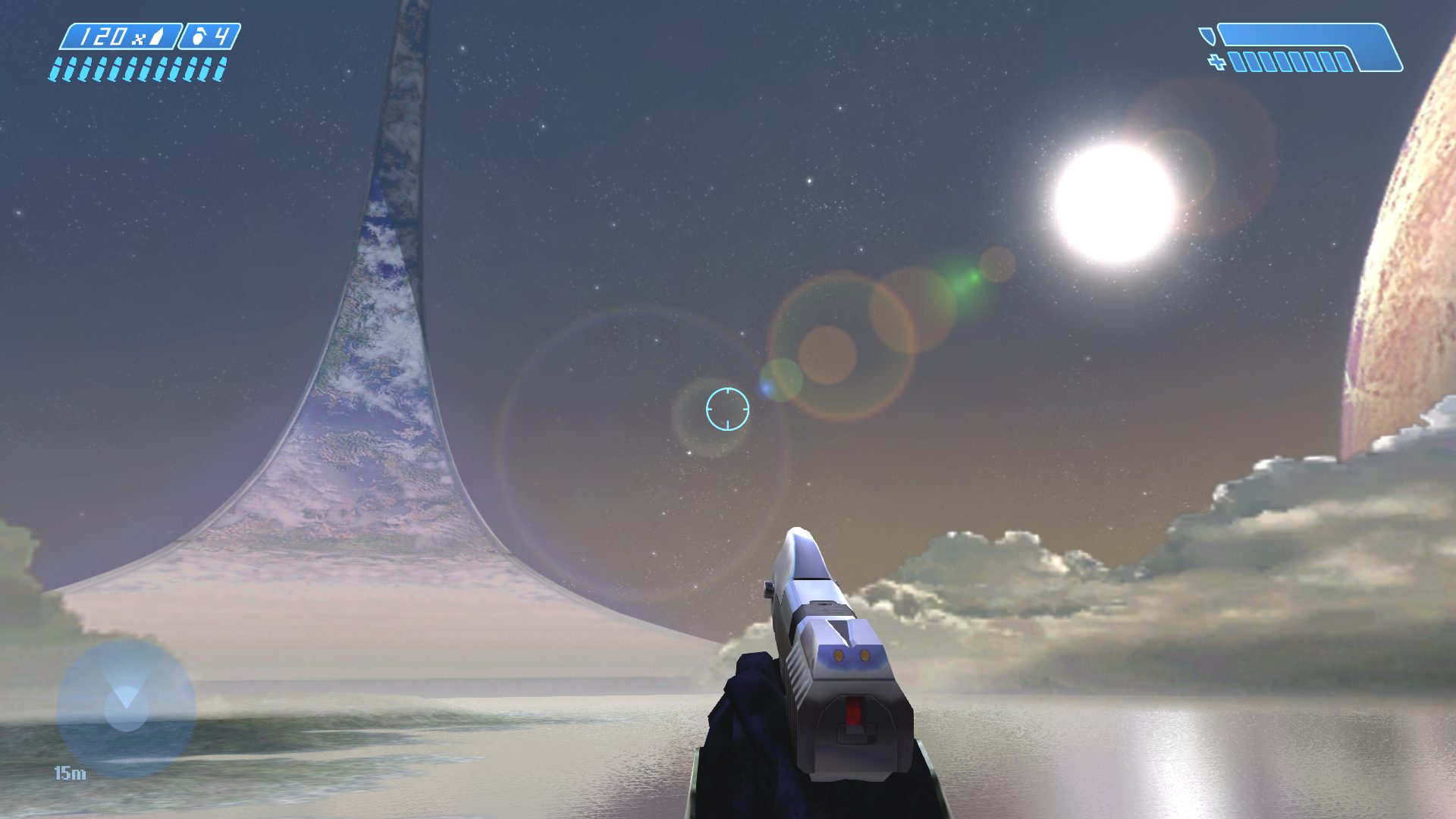
Gameplay
The combat is fluid and very fun. Classes of enemies move differently, deal different amounts of damage, and require different strategies so it prevents things from getting repetitive and boring. You can also pick up weapons from enemies and dead allies, allowing you to tailor your arsenal to your liking. You can also choose the difficulty as you wish (something that is in all the games, so I’ll only mention it once).
The level design is really fun, always changing up the format of the levels to keep things interesting. Some levels are traversing corridors and bridges, others are on wide plains and forests. Vehicle levels are especially fun, driving around in a jeep firing at enemies or flying in a spaceship. Other NPC soldiers will be with you to help, creating a fun team atmosphere.
As with the campaign, the controls were very innovative for the time, however, to the modern gamer it will take some adjustment. You can’t run, you and the enemies move slowly, and the guns fire slowly. Because the controls are a bit janky compared to modern games, it makes certain parts quite difficult on account of your movement and firing speed. I played it on the normal difficulty and had a hard and frustrating time with later levels because of this, especially when fighting the overwhelming and much-faster-than-you Flood faction.
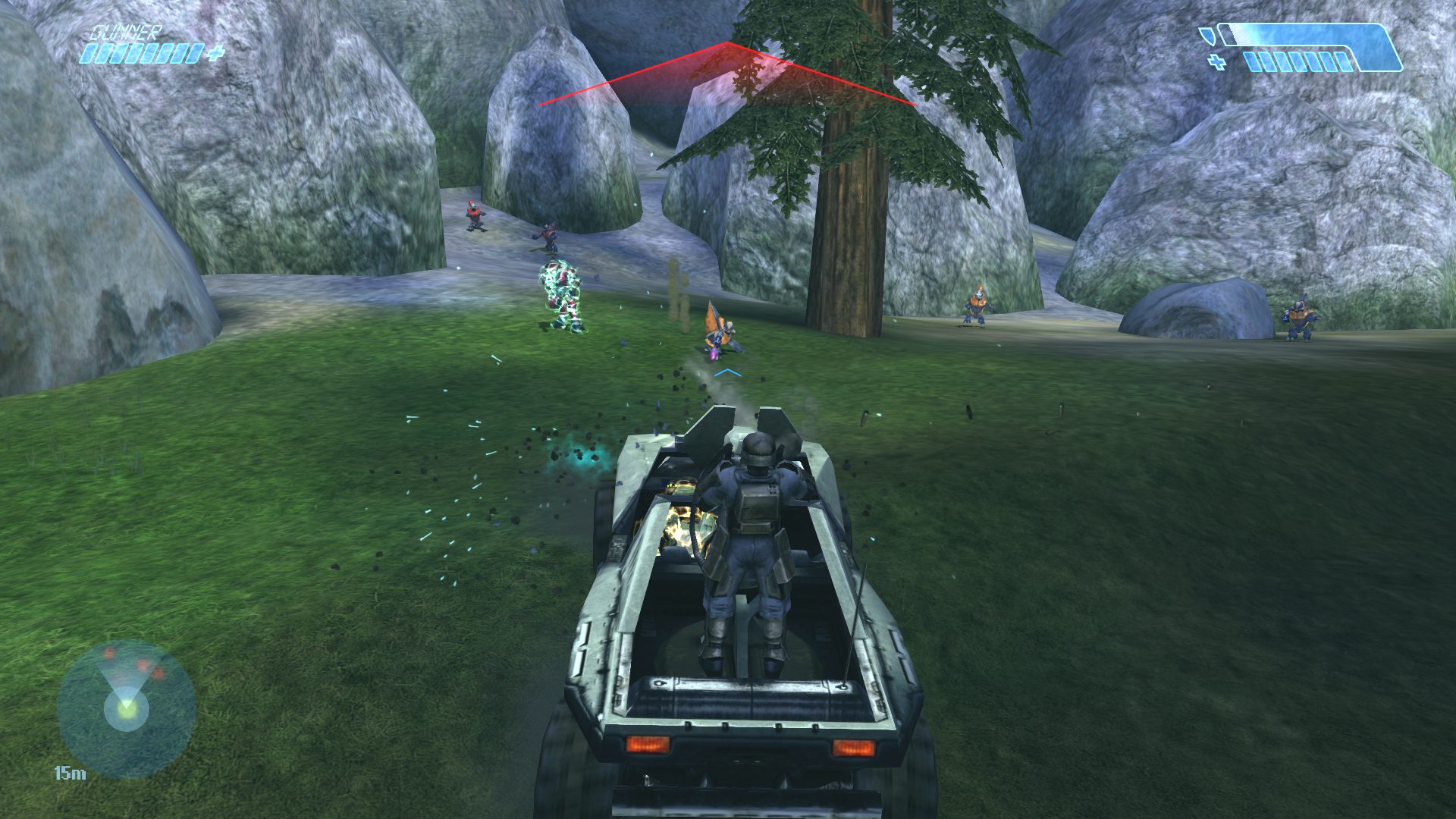
Graphics
As with everything else, they are very dated. However, the game still looks good in the original graphics, with lots of vibrant colours to liven up the environments and many cool building and enemy designs, especially the Elites.
If playing on the Master Chief Collection, you can toggle between the original graphics and updated ones. I personally kept the original ones because I felt they had more charm to them, while the newer graphics looked brown and kinda off.
Halo 2 (2004)
Story
With the foundations of the world and plot having been laid in Halo: Combat Evolved, it allowed Halo 2 to build upon them in some really incredible ways, making one of the best video game stories I have ever played.
You continue to play as Master Chief, now back on Earth and fighting off a Covenant invasion both in orbit and in the city streets of New Mombasa. You soon find yourself on the undiscovered Delta Halo, restarting the struggle to control one of the Halo rings. However, you also play as Thel ‘Vadam, the Covenant commander who’s forces you fought in Halo: Combat Evolved. Disgraced after failing at the first ring, he becomes the Arbiter, a political and religious rank in the Covenant, and is sent by the ruling High Prophets to obtain a sacred artifact on Delta Halo. Playing as these two characters, you gain a wealth of knowledge about the advanced state of humanity, the violent interplanetary war and each side’s perspective on it, and the Covenant as a corrupt theocratic empire.
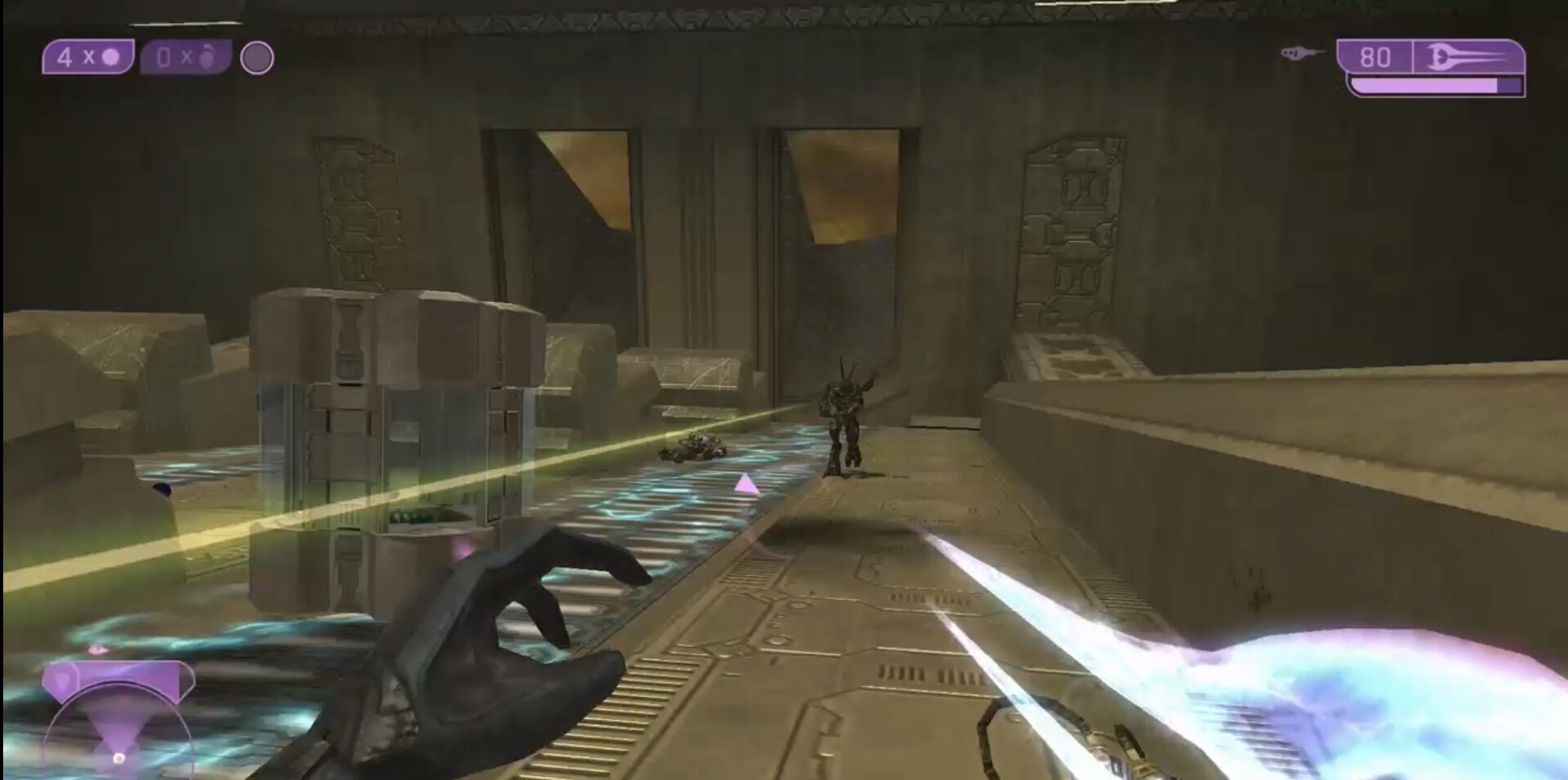
While the first game had almost no side characters other than Master Chief, this game introduces tons of lively characters such as the ambitious Prophet of Truth, the expertly-written Arbiter, and the hilarious Lieutenant Johnston.
There are surprises and twists in this game too, but unlike Halo: Combat Evolved, they have more buildup and enrich the story so much more.
Gameplay
Movement and combat are a lot faster in this game. You can still pick up weapons of enemies and allies, but there are many more weapons to choose from in this game, including my personal favourite, the Carbine. You can also duel wield lighter weapons, making combat more fun. Enemy types are mostly the same, but there are some more additions, mainly the Brute species of the Covenant.
The level design is much improved. Between rolling through New Mombasa in a tank and blasting Covenant speeders, jumping off buildings onto a giant Covenant combat walker to blow it up from the inside, and having spaceship dogfights around a dangling weather station, the levels are even more exciting, different, and fun.
However, levels where you fight the Flood can still be frustrating because of how much the enemies rush you, even on normal difficulty (but not as bad as the first game).
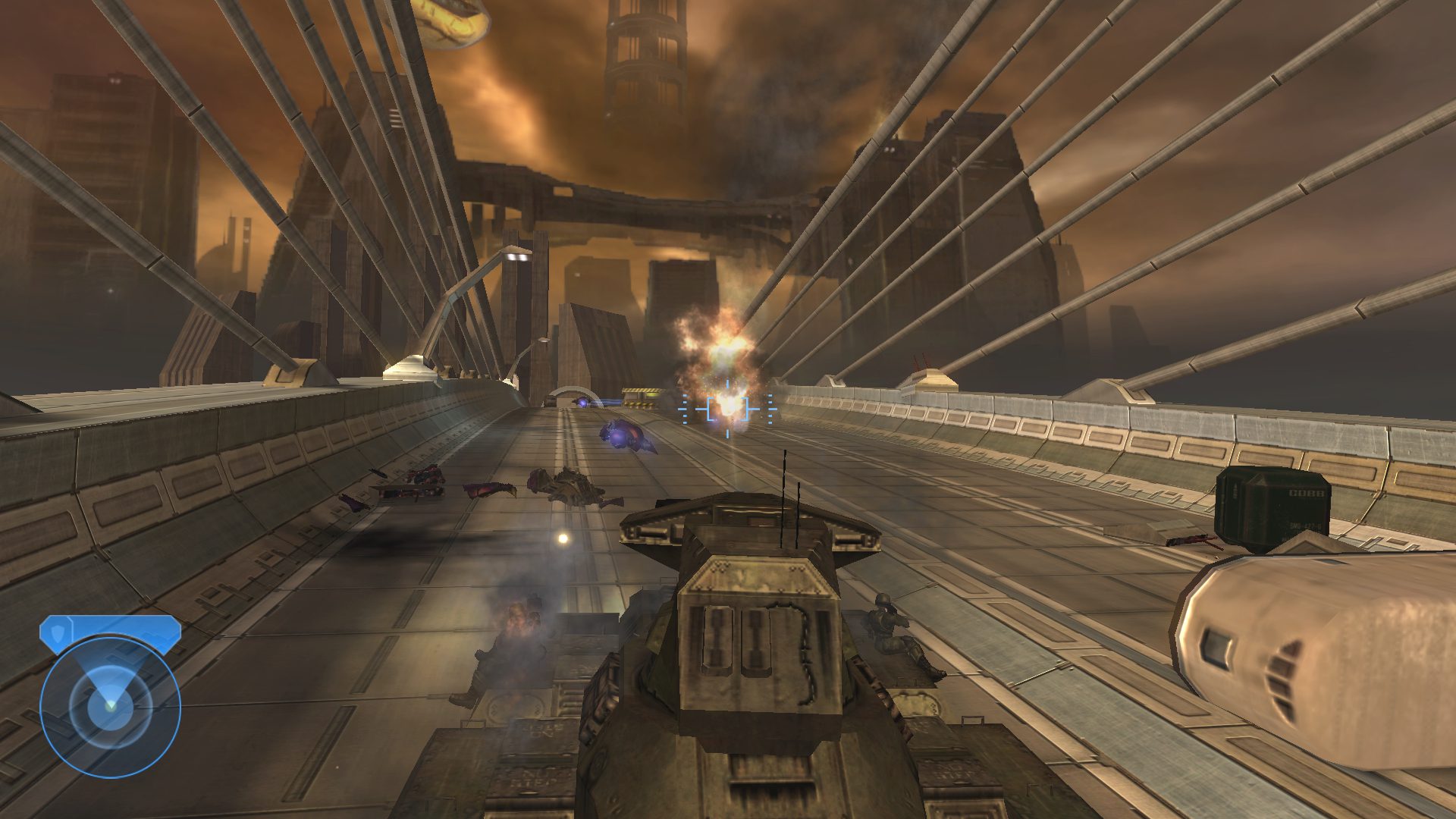
Graphics
They are massively improved from Halo: Combat Evolved, with much more detail and colour complexity in the character models and environments. However, the overall colour scheme is a little dull at times (even compared to the first game), with nothing really popping all that much. With the Master Chief Collection, you can also toggle between original and remastered graphics. The new graphics look a bit too bright and visually overpowering in my opinion, but since Halo 2’s campaign is so legendary, all the cutscenes were redone too to be their own cinematics, and MAN do they look gorgeous.
Halo 3 (2007)
Story
Going into this game, I was like “I’ve heard it’s good, but there’s no way it’ll be better than Halo 2.” Let’s just say I was proven wrong, and Halo 3 is now one of my favourite games.
Following the events of Halo 2, Master Chief returns to Earth and works to fight off the Covenant as they dig up New Mombasa city. Things take a turn when they find a portal leading to the Ark, the structure that can activate all the Halo rings around the galaxy simultaneously. A race begins against both the Covenant and the Flood, where the fate of the galaxy rests on a razor’s edge.
Filled with character drama and callbacks to the first game, Halo 3 is a cathardic, action-packed ride that will leave you with some feels by the end.
As absolutely incredible as the campaign was, one issue I had is that you don’t get to play as the Elites again and see the Covenant perspective, which is something that I wish was included more after it was so cool to see in the second one. Even though the Elite characters from Halo 2 play a big role in this game, you only see them through the human perspective. It also really annoyed me that they turned the Prophet of Truth into a way more generic angry villain and removed his calculating calmness from the last game, but I digress.
Gameplay
It is very similar to Halo 2 in it’s gameplay and level design (so, still amazing). However, many levels are even more action-packed in their design than the second one, giving the player some truly climactic moments for the final installment of the Master Chief story (at least it was SUPPOSED to be… I’m looking at you Halo 4)
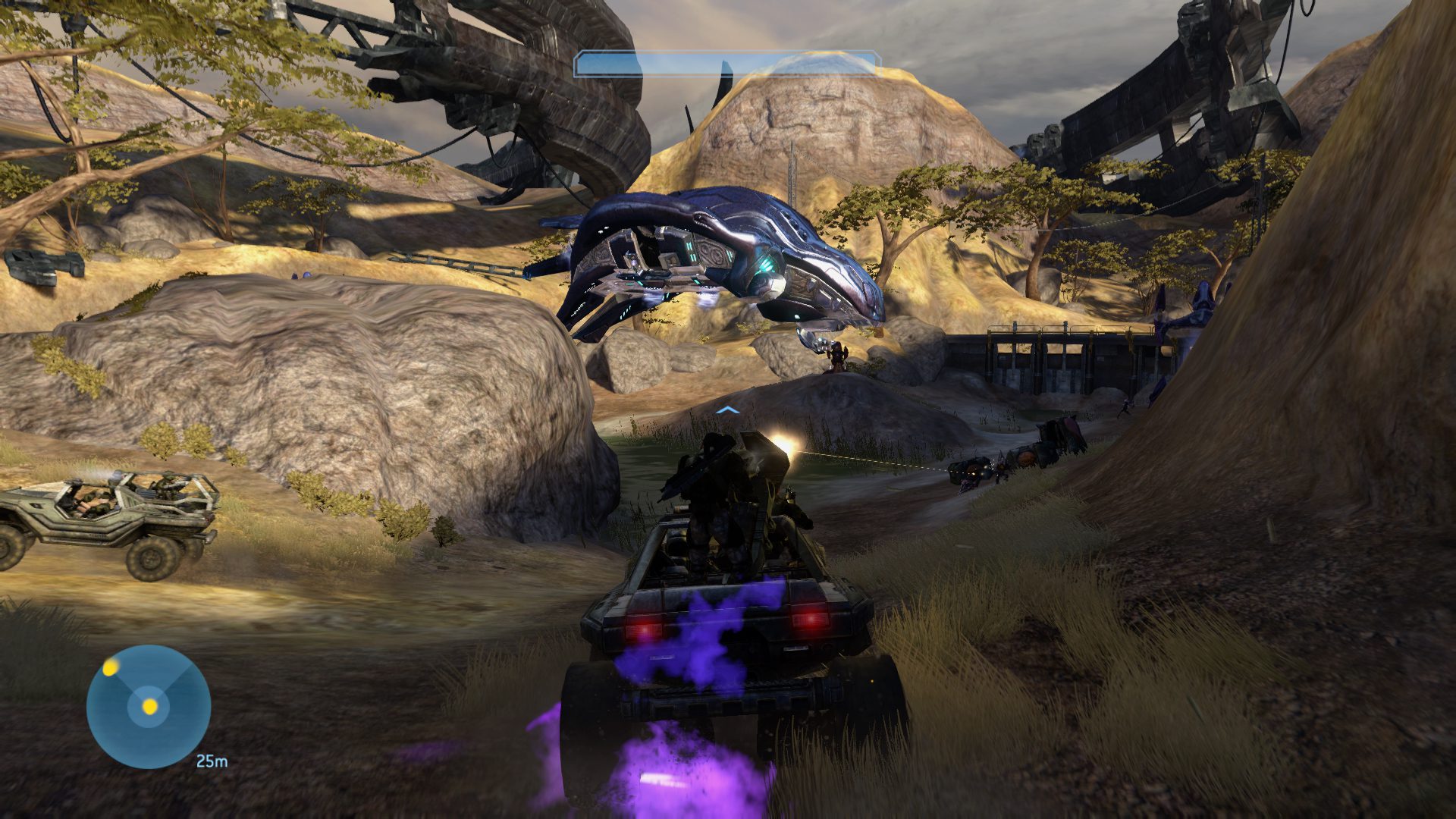
Graphics
They are a further improvement from Halo 2, everything being more crisp and detailed. The lighting and colour are way more vibrant and allows for prettier levels. But, since the Brutes are the main villains now, all the vehicles are different. Instead of the sleek, violet look of Covenant vehicles in past games, the new Brute vehicles are grey, clunky, and honestly, just ugly.
Halo 3: ODST (2009)
Story
I’ve heard it said that ODST is more like a DLC than a full Halo game, but many fans consider this their favourite one.
It takes place in New Mombasa from the moment Master Chief leaves Earth in Halo 2 all the way to the beginning of Halo 3. You play primarily as an unnamed rookie (referred to as, unsurprisingly, Rookie) who is an Orbital Drop Shock Trooper (ODST). You are immediately introduced to the rest of his team, a cast of characters varying from hotheads to sweet talkers. You are dropped into New Mombasa but your team gets scattered and you wake up hours later during a rainy night. The rest of the story consists of Rookie traversing the city looking for his team, finding clues to their whereabouts and then transferring to playing a level from his team members’ perspectives to show where they went and what they did while Rookie was knocked out.
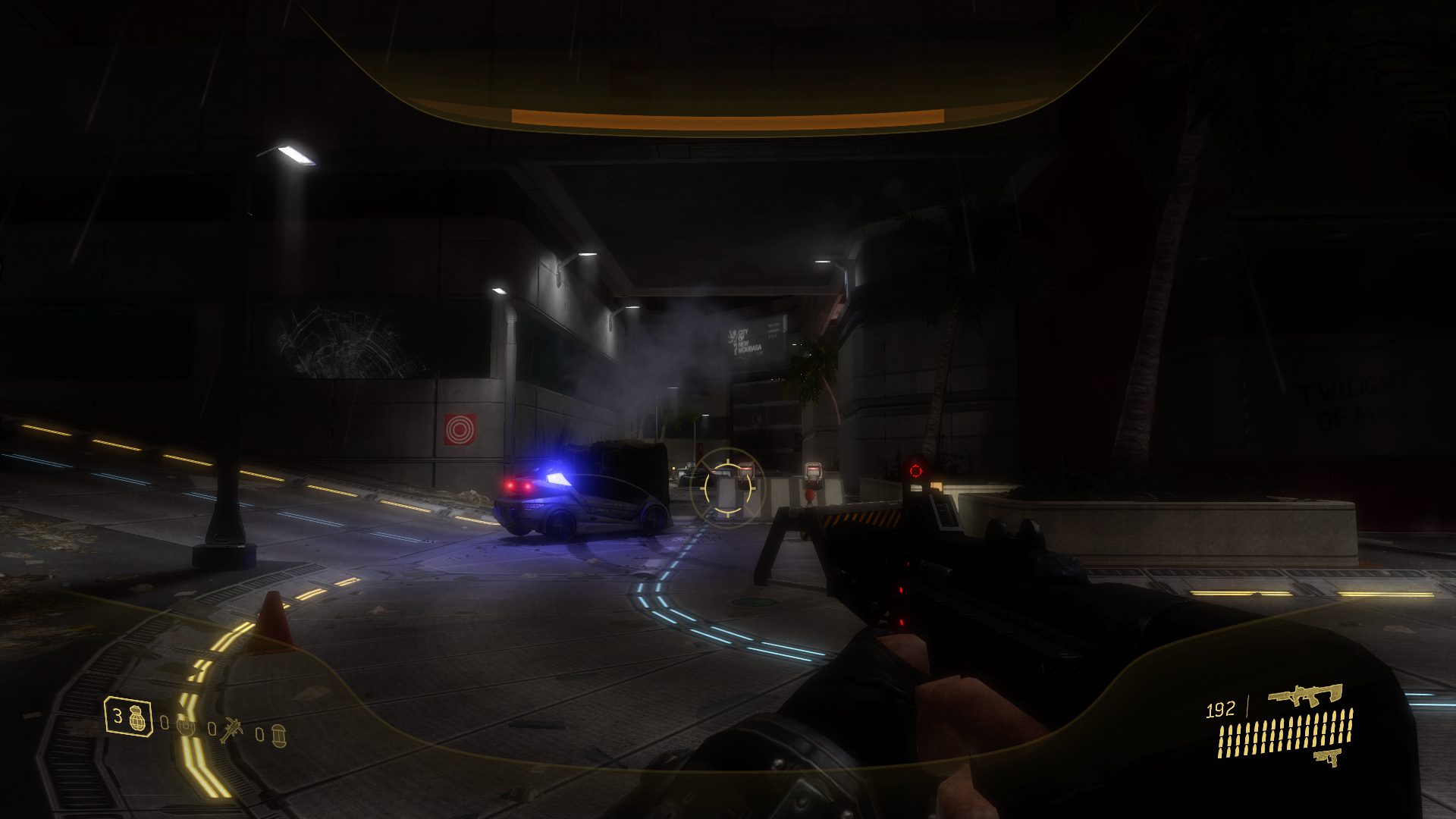
It was very refreshing to get a story on a smaller-scale with lower stakes. It allows you to understand more of what’s going on on the ground as Master Chief is off saving the galaxy or something, and it was great to follow a group of enjoyable characters so closely as opposed to the silent, lonely Chief. Oddly enough, I found the stakes more investing than the larger-scale stuff. By the end of the game, I was legitimately stressed because I cared for the characters so much that I wanted everything to turn out alright. Unlike the Chief, this group actually has a chance of dying.
P.S., if you’re a fan of Nathan Fillion, he plays the captain of Rookie’s team, Buck. That man’s voice is irresistible.
Gameplay
The most apparent change in gameplay is that you can get hurt a lot easier. You’re not playing as a supersoldier anymore, you’re just normal guys. It’s a small detail but it gives more nuance to the world and more humanity to the characters.
Most of the levels are scattered perspective changes, but MAN are they fun, especially when they start linking together. Each one is different in its own ways; one level you’re driving through a zoo and shooting down speeders, the next you’re holding down a besieged building as you’re rigging the place to blow. I had some of the most fun in this game out of the whole series, and the level design gets more and more exhilarating as the game goes on.

Although it gets repetitive after a while, one of the best parts of the game is the levels where Rookie is just wandering in the nightly rain, looking for the next clue to find his team. What makes these levels good is that the city is silent and empty, abandoned cars and the scars of battle from earlier in the day making it a peaceful yet sad scene. There are small groups of enemies here and there, but not too much since the main battle is over. You can also find audio logs of a young girl during the Covenant invasion, allowing you to follow an even smaller-scale story. As you walk through the ruins of the metropolis, melancholy yet enchanting piano and saxophone music guides you on your way, making those levels stand out not because of design complexity or fun, but because of simple beauty.
Graphics
They are pretty much the same as Halo 3, staying true to the game’s full name. Not much to say here.
Halo: Reach (2010)
Story
This game is similar to ODST but takes place during some very important lore events that happen right before Halo: Combat Evolved. It follows a team of Spartans on the planet Reach, the same planet that Master Chief’s ship was fleeing in the first game (context, glorious context). You are a new recruit to Noble Team and are now amidst a group of colourful characters with even more variety than ODST’s. Meanwhile, you (referred to as Noble 6) are a faceless, nameless soldier that the player can insert themselves into (boy oh boy, where have I seen that before).
On your first mission, you go to fix a communications dish supposedly damaged by rebels, only to find that it’s the Covenant. With the Covenant confirmed to be on Reach, the planet goes on lockdown as the humans try and struggle to fend off the incoming invasion force. A tragic yet beautiful tale of sacrifice, heroism, and enduring hope unfolds, creating (yet again) one of the best-crafted and hard-hitting stories I have ever seen in a video game. Have your tissues ready for this one.
It is clear that Bungie wanted this to be the end of Halo, taking you full circle to where you started four games and nine years earlier. It would have been a perfect send-off, if Microsoft didn’t need more money.
Gameplay
Still very similar to the others, but also different. There are lots of new weapons of both human and Covenant make, allowing for the player to find new favourites to look out for. Power ups allow for players to have more customization in the gameplay, and combat feels a lot faster-paced. Not only are Elites back (which I was very happy about), but there are also more ranks for them in Reach, further switching things up. As with ODST, the level design is a step up from the previous games, making the game super fun and exhilarating to play. Also, may I say that you can RUN now!

Graphics
The best they will be out of the whole original series. Movement is much smoother and faster, character and building designs are more complex, and the planet Reach is absolutely beautiful (seriously though, the skyline is always thin mountains with a green gas giant behind them, just gorgeous).
Multiplayer
I can’t talk about Halo without mentioning the multiplayer. After all, that’s the main reason the original games became such a phenomenon, not to mention that this series literally INVENTED modern multiplayer.
Playing on the Master Chief Collection, all the game modes and maps across the series have been consolidated so you can switch between them. The modes are creative and vary wildly, allowing for almost anyone to find something they like. You can do a team deathmatch, capture the flag, a sniper shootout, holding an objective, etc. You can even do matches with armed vehicles. With ‘forge,’ you can make your own maps and custom game modes, where I’ve seen people across the internet have the most fun.
The maps from Halo 2 onward are standard FPS multiplayer maps, but Halo: Combat Evolved‘s maps are… something else. Because online multiplayer was in its infant stages at the time (largely thanks to this game), the maps are really small and open. Throw eight players on opposing teams into that, and Halo 1‘s multiplayer experience becomes chaos incarnate. If you aren’t spawn-killed, you’ll be killed pretty soon after, either by a gang of people two steps away or someone shooting you from across the room-sized map. Oddly enough, the constant action of that setting actually makes for a fun time, more fun than the other games in my opinion.
Catholic Takeaway
Something that I found interesting in this series is how no character ever puts themselves and their own needs above the greater good. They are all more than willing to give their own lives if it means saving others’, whether that’s saving their few comrades or a full city of people they’ve never met before, and many do end up offering themselves for that reason without batting an eye. While these acts of courage can be seen throughout the series, this is exemplified best in Halo: Reach. Such an iron will and suppression of self importance come mainly from the characters’ military backgrounds, but such a sentiment can be applied to the lives of Christians as well. We are all called by Christ to humble ourselves and lead through service, as well as that there is no greater love than to lay down one’s life for a friend. Christ laid down his life for all of us, whether we have lived righteous lives or not, so to imitate our Lord and Master we must also be willing to suffer and die for the sake of others. Of course, we don’t face situations like that everyday, so what about ordinary life? The actions of Halo’s characters portray a humility that all of us can look to work on in our own daily lives. We are not worth more or are more important than the person next to us, but we must consider all to be higher than us so that we may be humble before God and neighbour. For that is what it is to be a Christian.
Overall
After playing through all five of these games, I can safely say that the original Halo games are some of the best stuff you can spend your time on. They’re fun as heck, look super cool, and create a really interesting world and emotional story to follow. Another thing I want to point out is that the music is incredible. These are the same composers who would follow Bungie Studios when they diverged from Microsoft and started making the Destiny games. Those games are very close to my heart and I’ve known the great work of these composers for years, and they certainly don’t disappoint in their earlier work. The music of Halo is upbeat and contemplative in the first one and only improves from there, gaining more gusto across the series as well as emotion.
Overall, the original Halo games are truly a masterpiece in the gaming world, and for anyone who has a chance to play them I would highly encourage it.
Scoring: 96% ⭐
Story: 5/5
Gameplay: 5/5
Controls: 4/5
Note: I put only 4 here since you can’t run for the earlier games and it gets annoying.
Visuals: 5/5
Replayability: 5/5
Parental/Morality Warnings
Violence: Of course, as a first person shooter, there is a lot of violence from, well, shooting things. There is also blood that splatters on the walls and floors from enemies and allies. In the case of the Flood, they reanimate dead bodies of humans and Covenant and turn them into twisted zombie forms. Aside from one-on-one violence, there are also a lot of dark things that happen in the world around the player, mainly to show how realistically horrible a sci-fi war like the one portrayed would actually be. This includes such things as ships full of soldiers being shot down in fiery crashes, civilians being killed in the streets at random by aliens, and even entire cities being burned to the ground by orbital plasma guns. Even within the parts showing the Covenant perspective there are messed up events such as racial genocide.
Profanity: There is light-to-mid level cursing in the series. Think PG-13 movies like Guardians of the Galaxy, and that’s basically what you’re dealing with.
Online Interactions: As with any online game, you can’t control how people on the other end of the mic will conduct themselves, and unfortunately, gamers aren’t known for doing that well. While playing the multiplayer to prepare this review, I got into the passenger seat of a jeep during a match and the guy driving jumped out and began shooting me to get me to leave. While doing so, over my muted mic he called me the most offensive slurs I’ve ever heard, all for getting into a car. It is also a long-running trend in the series to ‘teabag’ downed players by crouching over their heads repeatedly.
Sexual content: The designs of certain female characters have been done explicitly to make them sexually attractive (mainly Cortana, the AI sidekick of Master Chief, who, despite being a great character, basically looks like a naked woman in a full spandex suit). There are also certain jokes here and there referring to picking up women or checking someone out. In ODST, there is a scene where two characters kiss rather unceremoniously.
Religious misunderstanding: Other than a joke acknowledging the Bible and where one character prays to God, religion is not mentioned in the human perspective. However, religion comes up a WHOLE LOT with the Covenant, which is a federation of alien races bound together by the worship of the Forerunners, the ancient race that built the halo rings. They believe that turning on the rings will begin the “Great Journey” where they will ascend to godhood, and thus are keen on finding them. Three shrewd High Prophets run the empire, and have declared a holy crusade to eliminate humanity in the name of the gods. Although the Covenant and their theocratic politics are the most fascinating part of Halo’s world (at least to me), you can clearly see how this is a very secular and problematic view of religion, where it is portrayed as nothing more than a bunch of fanatics blindly following mean old men telling them to go kill the heretics. The Arbiter’s quest (although being arguably the best plot in the series) worsens this issue as it makes the Covenant’s faith even more akin to a secular view of religion, but those are spoilers.
